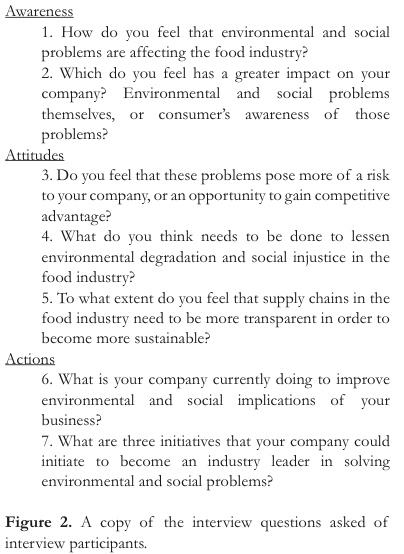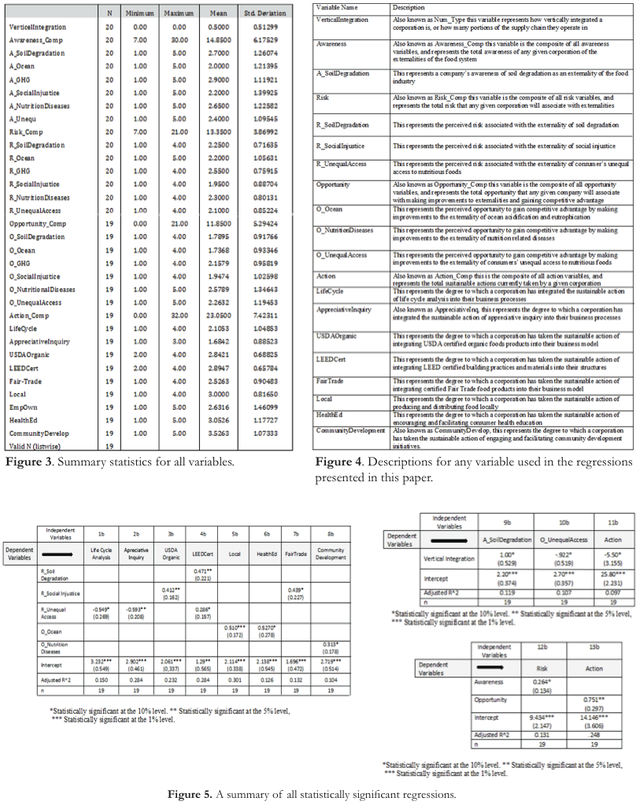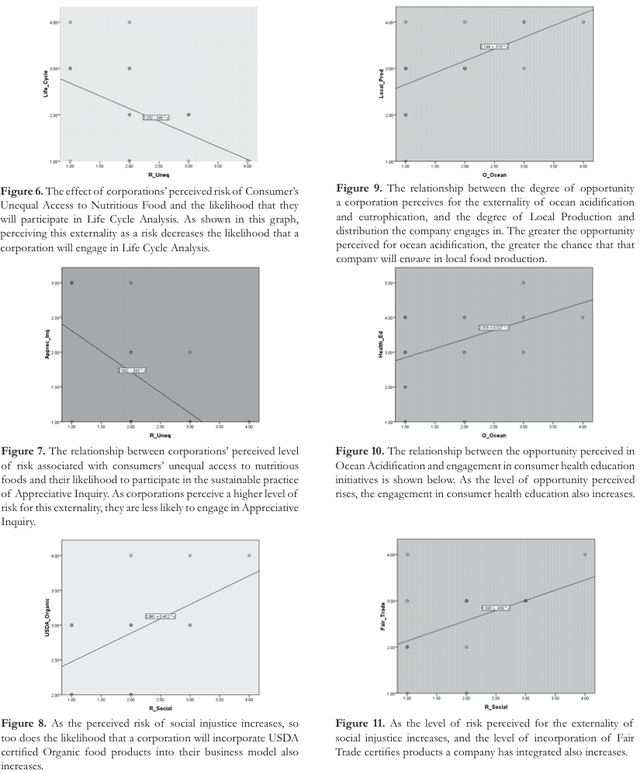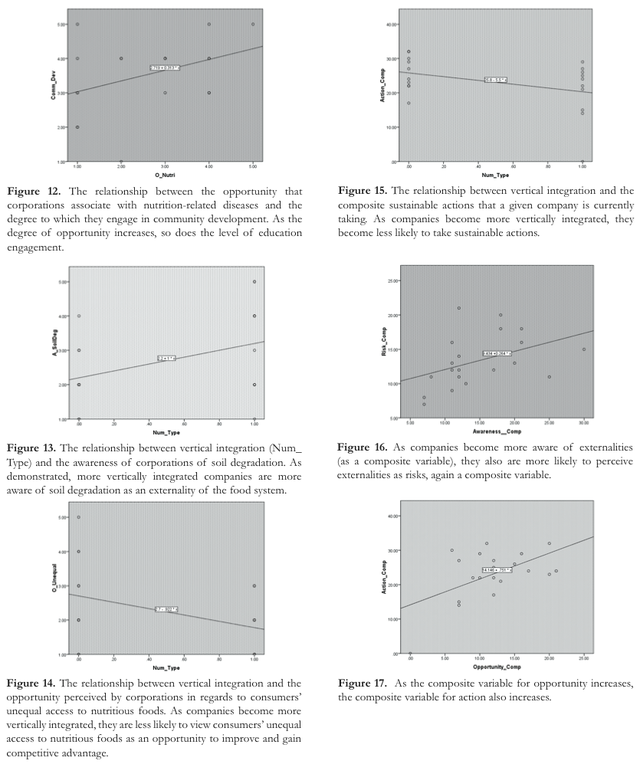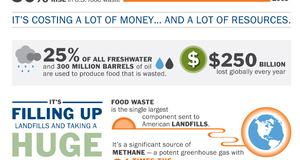From Discussions VOL. 10 NO. 1Toward A More Sustainable Food Supply Network: An Economic Analysis of Sustainability in the United States Food IndustryAlthough vertically integrated corporations are more aware of externalities such as soil degradation, they are less likely to take sustainable action. This is most logically explained by the fact that these corporations feel less pressure from the external market because so much of the supply chain is contained within their own corporation. If the incentives for action are not present, a corporation is not going to take action even if they are aware of an externality. As executive vice president of food distribution company Labatt Food Service explains, “there’s this tension between doing the right thing and doing the least expensive” (T. Canty, personal communication, March, 18, 2013). Ultimately, if a there is no incentive for them to act sustainably. The final conclusion from the above regressions is that although a higher level of awareness will lead to a higher level of risk perception, this does not imply that a higher level of opportunity perception will lead to more sustainable action. This slight disconnect in the thought process of corporations is pivotal to understanding how to encourage sustainable action. Many corporations interviewed reported demand for it, and therefore no incentives to take action, even if they were aware of the externalities and the risk they posed their company. As Michael Neuwirth, the senior director of public relations for the Dannon company states: “I don’t believe that consumer awareness of the realities of environmental and social impacts of food companies is high. I believe that the awareness is quite low...among mainstream consumers. ... The number one reason why people buy a particular food is the taste, price is the second. Environmental and social impact are very low” (M. Neuwirth, personal communication, March 1, 2013). However, representatives of corporations who had taken reported having “gained competitive advantage by having taking initiative and leadership on these issues” (M. Greenawalt, personal communication, March 15) before there was a consumer demand for solutions to externalities of the food system. Based on the above regression analysis and the interviews conducted, it is clear that food companies currently in the food supply chain system can take sustainable action if properly incentivized, just as a company in any other industry. Acknowledging that this is a business opportunity, some corporations are currently leading the way towards a sustainable food supply system, typically by and core competencies. However, many companies are still unaware that these environmental and social externalities exist along the food supply system, and even fewer recognize these externalities as opportunities to better our planet while improving their financial performance. While several relationships and conclusions have become clear from this survey and interview, further research is required to determine what exactly incentivizes corporations to view environmental and social externalities as opportunities to create sustainable solutions and gain competitive advantage. Endless opportunities exist within the food industry to create truly innovative solutions to global problems such as hunger, social injustice, and nutrition-related diseases, as well as land, oceanic, and atmospheric degradation and pollution. It is important that the intricacies of incentives and corporate motivations for sustainable actions are further researched to get one step closer towards a more sustainable food supply network. AcknowledgementsI would like to thank my advisors Bonnie Richley and Tony Lingham for all of their advice and guidance on this project. I would also like to thank Sheila Pedigo and Bethany their assistance in these research endeavors. I am also very appreciative and Case Western Reserve University for funding and the opportunity to conduct this research. Finally I would like to thank any and all participants in my survey and interview who made this research possible. ReferencesBeyster, J. (2008). Embracing Change Through Employee Ownership. , 45(3), 28-31 BLANDY, D., & FENN, J. (2012). Sustainability: Sustaining Cities and Community Cultural Development. Studies In Art Education, 53(4), 270- 282. Bloomberg Food Wholesale/Distribution Companies, (2013). Bloomberg. Retrieved from http://www.bloomberg.com/markets/companies/food- wholesale-distrib/ Carmona, R. H., (2005). Improving health literacy: Preventing obesity with education. Journal of the American Dietetic Association vol. 105 issue 5 May, 2005. p. 9-10 Food Processing’s Top 100, (2013). Food Processing. Retrieved from http://www.foodprocessing.com/top100/index.html Guinee, J.B., & Heijungs, R., (2011). Life cycle sustainability analysis: Framing questions for approaches. Journal of Industrial Ecology, 15, 5, 656- 658. Helweil, B, (2010). Organic food can solve world hunger. Organic Food and Farming, 81-87. Jackson, W., (2010). Consulting the genius of the place: An ecological approach to a new agriculture. Berkeley, CA: Counterpoint Press. Mackenzie, F. T., Ver, L. M., Lerman, A. (2002). Century-scale nitrogen and phosphorus controls of the carbon cycle. Chemical Geology, Martin, J. (2009). Fair Trade. FSB: Fortune Small Business, 19(5), 76-79 Orr, V. (2012). LEED Standard. Alaska Business Monthly, 28(2), 40-43 Patel, R., (2007). Stuffed and starved: The hidden battle for the world food system (6th ed.). Brooklyn, NY: Melville House Publishing. Figures
Suggested Reading from Inquiries Journal
Inquiries Journal provides undergraduate and graduate students around the world a platform for the wide dissemination of academic work over a range of core disciplines. Representing the work of students from hundreds of institutions around the globe, Inquiries Journal's large database of academic articles is completely free. Learn more | Blog | Submit Latest in Economics |

